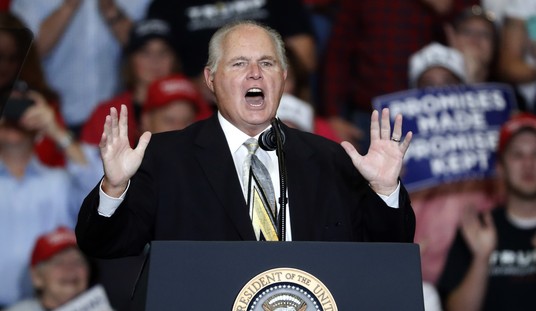Mark Steyn writes, “If you want to see what ‘the masses’ are meant to look like, buy a DVD of Metropolis, Fritz Lang’s 1926 ‘expressionist masterpiece’:
As futuristic nightmares go, it’s hilarious: The workers are slaves, living underground, chained to the levers, wheels, cranks and cogs of a vast machine, dehumanized by the crushing anonymity of their servitude, etc., etc.
Alas, nothing dates faster than a futuristic vision: Today, the nightmare that beckons is quite the opposite. Instead of a world in which the workers are forced to operate huge, clanking machines below the Earth all day long, the machines are small and silent and so computerized no manpower is required and the masses have to be sedated by shallow distractions like supersized shakes and Wal-Mart and 24-hour lesbian wrestling channels on Premium Cable.
It took the workers’ tribunes a while to catch on: Even today, when your average union leader issues his annual Labour Day address, you can tell at heart he still thinks it’s 1926 and Metropolis is just around the corner. But the intellectual left has been scrambling for decades to come up with explanations as to why, if everything’s so bad, everything’s so good: Noam Chomsky’s theory of media manipulation – “manufactured consent” – can stand for an entire school of philosophers who believe a subtler breed of capitalist overlords are maintaining the workers in some sort of fools’ illusion of content.
But, inevitably, this was only going to be an intermediate stage, given that the shimmering mirage seems to be holding up pretty well. The new received wisdom – forcefully articulated by, among others, Maude Barlow’s Council of Canadians at the laugh-a-minute Johannesburg “Earth Summit” – is that the masses themselves are the problem. The oppressed masses refuse to stay oppressed. If they were down in the basement chained to the great turbines, all would be well. But, instead, they insist on moving out of their tenements, getting homes with non-communal bathrooms, giving up the trolley car, putting a deposit down on a Honda Civic and driving to the mall. When it was just medieval dukes swanking about like that, things were fine: That was “sustainable” prosperity. But now, everyone wants in. And, once you do that, there goes the global neighbourhood.
Thus, Simon Fairlie, in his new pamphlet The Prospect Of Cornutopia, ponders the consequence of a 3% “sustainable” growth rate and immediately spots the catch: by the year 2100 we’ll be 18 times wealthier than we are today.
That’s the problem? Of course!
Just ask Jerry Brown.










Join the conversation as a VIP Member